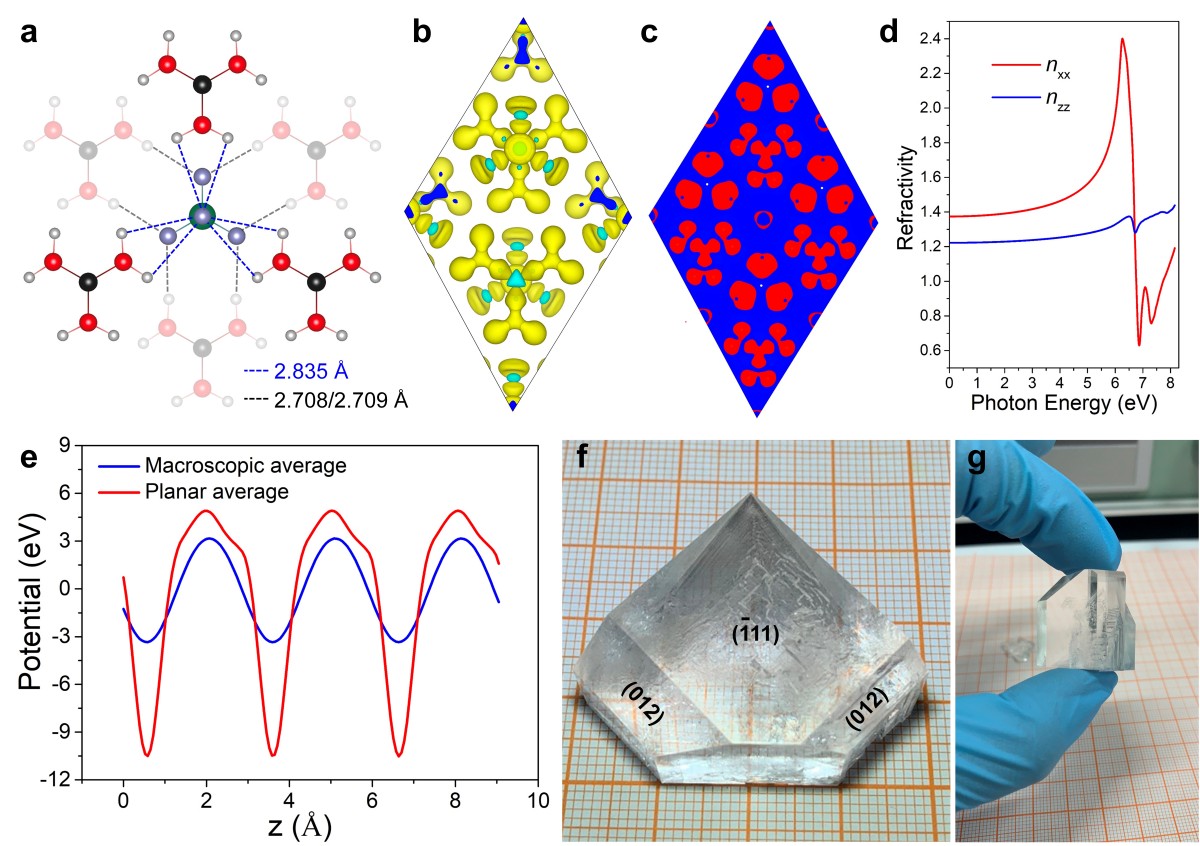《Nature Photonics》:Researchers propose a new class of nonlinear optical crystal
Editor: | Jun 14,2023
Nonlinear optical (NLO) frequency conversion, which enables a deterministic modulation of light’s wavelength and polarization, laid the foundations for harmonic generation, optical manipulation and photon entanglement, and so on. Phase-matching is a condition for which the output signal during the frequency conversion process is maximized when considering the conservation of photon momentum. This represents the best-case scenario for conversion efficiency in a nonlinear process; however, due to material dispersion, the three interacting beams do not propagate in phase, resulting in destructive interference and an extremely low conversion efficiency. This so-called phase-matching problem (or phase-mismatching) became immediately evident when the first attempt to describe such a condition was made for the quadratic nonlinear process in 1962. Compensating for phase-mismatching is therefore an important challenge, and subsequent efforts have focused on developing new technologies and experimental verifications.
The phase-matching condition of n(2ω) = n(ω) is very tough where the incident and second harmonic light have different polarizations, and birefringence is currently widely employed to implement the phase-matching. Birefringent phase-matching matches the phase velocity of interaction waves to overcome dispersion and suppresses phase-mismatching, aided by polarization-dependent indices in a certain spectral region. This is, however, limited by the dispersion of naturally occurring crystals, which prevents them from achieving phase-matching throughout the entire optical transparency range when using a direct SHG process. This situation results in a loss between the phase-matching wavelength limit (also known as the shortest phase-matching wavelength, λPM) and the ultraviolet cut-off edge (λcut-off), and thus the transparency range cannot be fully utilized (typically with λPM > λcut-off), resulting in phase-mismatching in the region of [λcut-off, λPM]. The loss of phase-matching wavelength ΔλL = λPM – λcut-off is evident for NLO oxides applied to varying spectral regions under the SHG phase-matching condition, and so far this is inevitable for all NLO crystals.
Interestingly, a past review paper raised the question of whether the ideal state (where λPM is equal to, or almost close to, λcut-off) could be achieved in NLO crystals based on birefringent phase-matching. To answer this question, in this work we propose a new class of crystals that can phase-match across its whole optical transparency range, termed full-wavelength phase-matching crystals.
Based on this, a research group led by Prof. Shilie Pan at Xinjiang Technical Institute of Physics & Chemistry, Chinese Academy of Science, proposed a new class of nonlinear optical crystal, termed full-wavelength phase-matching crystals. In this work, a theoretical model was developed and metal-free crystals were highlighted for finding the full-wavelength phase-matching crystals. Based on this, guanidinium tetrafluoroborate (GFB) is experimentally found to be able to output frequency-doubling light close to its λcut-off. We clarified the role of the anisotropic strength of bonding in the dimension of energy on phase-matching wavelength and, based on this, we proposed a new class of materials: full-wavelength phase-matching crystals, which hold the ability to generate frequency doubling light within their whole optical transparency range. Tunable frequency-doubled light output was achieved from 193.2–266 nm, which indicates that GFB can output frequency doubling light close to its λcut-off and therefore it is identified as a full-wavelength phase-matching crystal for a direct SHG process. It should be noted that GFB can still achieve the direct harmonic light output when its transmittance at 193.2 nm is lower than 0.02%, demonstrating its full-wavelength phase-matching ability. A large GFB crystal enables us to make a careful evaluation of its ability for FHG at 266 nm. This crystal shows a high transmittance at 266 nm, favourable anisotropic thermal expansion, large NLO coefficients, which makes it a high-performance crystal for generating light at 266 nm, the fourth-harmonic of a commercial 1,064 nm laser.
The paper was published on Nature Photonics with the title of“Achieving the full-wavelength phase-matching for efficient nonlinear optical frequency conversion in C(NH2)3BF4”. This work was financially supported by National Key R&D Program of China, Young Elite Scientist Sponsorship Program by CAST, National Natural Science Foundation of China, and the West Light Foundation of CAS.
 Figure: Crystal structure, microstructural analysis and as-grown single crystal.
Figure: Crystal structure, microstructural analysis and as-grown single crystal.
附件下载:
 (86) 991-3838931
(86) 991-3838931 lhskj@ms.xjb.ac.cn
lhskj@ms.xjb.ac.cn (86)991-3838957
(86)991-3838957 40-1 Beijing Road
Urumqi, XinjiangChina
40-1 Beijing Road
Urumqi, XinjiangChina